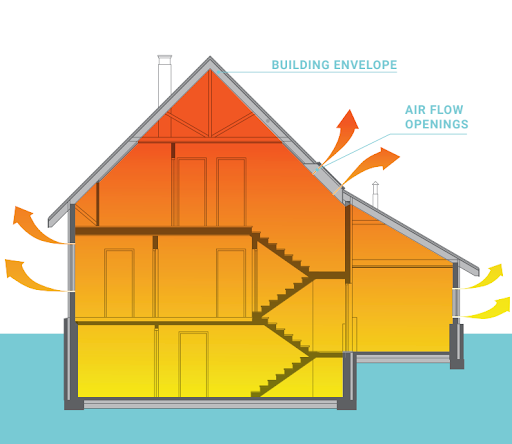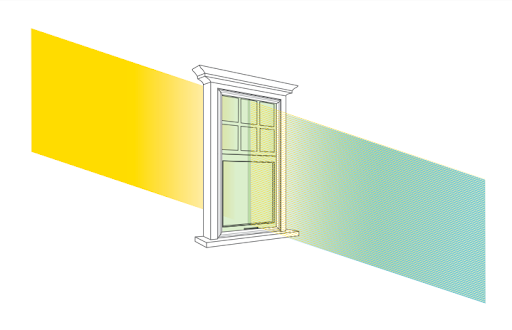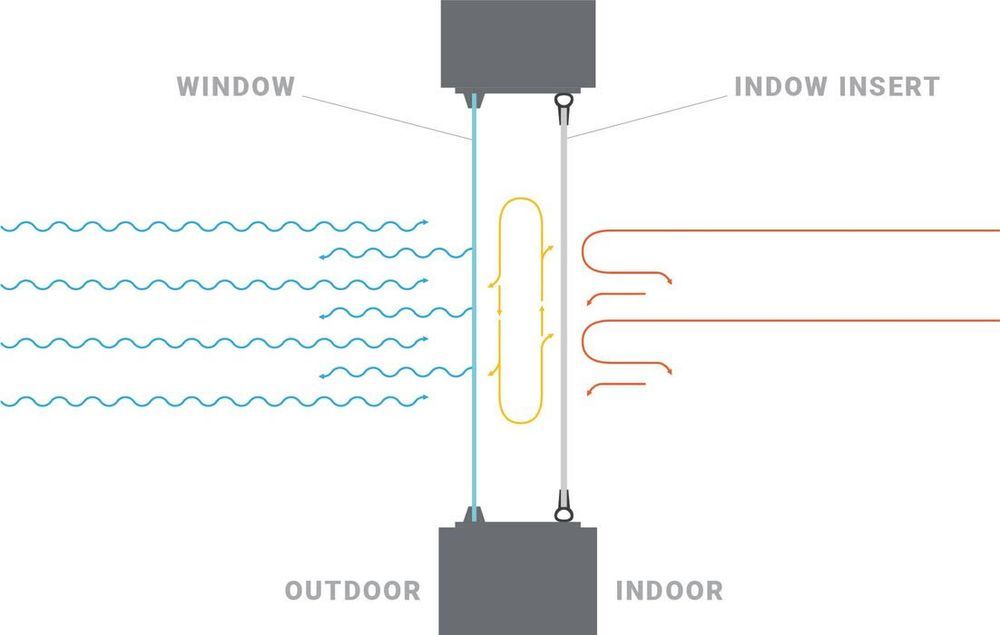Anonymous
3 Stars ⭐️⭐️⭐️⭐️⭐️

If you’ve never purchased or repaired windows, you might not know what you need when that time comes. It seems like there are countless window types to sort through. Comparing window ratings is a good starting point, but even then it’s not crystal clear. R-value vs U-value? Is one more important than the other? And what is a good score? Here we break down R-value vs U-value and help you figure out where to go from there. After all, a straightforward problem like warming your home should have a straightforward solution.

R-value is a score given to a barrier – such as a wall, roof, or window – based on its ability to resist the flow of heat through it. Think back to elementary school when we learned about heat conductors and insulators. Can you recall copper as one of the best examples of a heat conductor? Heat passes through it easily. So copper would make a very bad wall. For your home’s “shell” (building envelope), you want something that resists heat transfer. The R-value (the ‘R’ stands for “resistance”) will tell you how well different barriers will resist that transfer.

In the US, you will see R-values ranging from 0 to 66. Higher numbers mean better resistance to heat transfer. While R-values can be assigned to any surface of a building envelope – roof, ceiling, floor, wall, window – it is important to think about the role a surface plays in your home.
Walls are well-insulated and meant to protect against the outside elements. Windows should insulate, but also be able to open and let fresh air in. Windows should also be transparent for visibility and sunlight. For this reason, comparing the R-value of an insulated wall to the R-value of a window is not a good teller of insulation qualities. Compare the R-value of walls to that of other walls; compare the R-value of windows to the R-value of other types of windows.
A single-pane window will have an R-value of 1. A standard double-pane window will have an R-value of 2. While a single-pane window with an R-value of 1 does not offer great insulation, you get a much better picture of its performance by comparing it to a double-pane window than to an insulated wall.
Some specialty windows that are highly insulated can reach an R-value of 5. This is great insulation, but the downside is the cost. Replacing multiple windows with these specialty windows will cost you thousands of dollars.
It is no secret that windows are the weakest spots in a building envelope when it comes to insulation. No windows will be able to insulate as well as the walls and roof of your home do. The aim is to increase their R-value and U-value as much as possible.
| Performance Data | Single-pane Window | Double-pane Window | Indow insert + Single-pane |
|---|---|---|---|
| Thermal Insulation (R-Value) | R-1.0 | R-2.0 | R-1.87 94% of Standard Double-pane |
U-value, or U-factor, is a score given to a surface based on how quickly it allows heat to pass through it. U-value can be thought of as the opposite of R-value. If R-value tells us of a surface’s thermal resistance, then U-value is a surface’s thermal transmittance. ‘R’ stands for resistance. For U-value, think of ‘U’ in circUlation, a word that has a similar meaning to “transmittance.”
But make no mistake: when it comes to winter insulation, a good U-value is given to a surface that transmits heat as slowly as possible. A good U-value does not indicate a surface quickly allowing heat to pass through it.
U-value scores typically range from 0.1 to 1. The lower the U-value, the better. A single-pane window has a U-value of about 1. This means it allows heat to pass through it quickly. A standard double-pane window has a U-value of about 0.5.
While we say that R-value and U-value are opposites of each other, there are some differences that we should discuss. Traditionally, U-value was used for windows and R-value was used for the other surfaces of a building.

R-value tells us how well a surface resists heat transfer. U-value tells us how quickly or slowly a surface allows heat transfer. Radiative heat from the sun has a much greater effect on windows than it does insulated roofs and walls, so that is taken into account with U-value. As a result, you can expect a window’s U-value to change based on time of year and time of day.
Calculating for R-value and U-value is easy. Dividing 1 by the R-value will give you the U-value:
R-value = 1/U-value
Dividing 1 by the U-value will give you the R-value:
U-value = 1/R-value
If you have an historic home with original windows, replacement is not an option. It can hurt the historic value and many historic districts do not allow window replacements. Maybe you don’t have the ability to take on an expensive window replacement project. You can improve your windows’ R-value and U-value without replacement.

Indow window inserts can be placed inside your window frames to improve the insulation of your window openings. When paired with single-pane windows, Indow inserts can improve the R-value to 1.87, or 94% of a double-pane window! With a double-pane window, the R-value will be improved even more. When paired with a single-pane window, Indow inserts will improve the U-value from 1 to 0.53. That is a huge improvement in insulation without the cost, time, or effort of a replacement project.
To see more performance data of Indow inserts and to learn about the various insert grades Indow offers, download our Product Data Sheet.
The Product Data Sheet also includes useful information on fit and egress compatibility with your windows.
Indow has insulated more than 23,000 buildings - helping reduce carbon emissions by nearly 200,000 tons - and creating comfort across the US & Canada!
My home is about 500 ft. from an interstate highway and had been looking for a solution to reduce the highway noise, especially 18-wheeler truck noise all night long. What pushed me to finally make a decision was the 9 month highway repair project with trucks moving back and forth with their loud beeping when going in reverse (every 20 seconds) all through the night, every week night. I opted for the acoustic inserts, which took 3 months to receive from the time of my order. I was not happy about the 3 month waiting period. I was very timely with measuring the windows which included an arched window which I had to trace. The measurement process required 10 hours of time, most of which was the tracing (including time and cost to make several trips to buy materials for this). When they finally arrived, I installed the inserts and had approximately a 30% reduction in decibel levels. After nearly $5,000 in costs, I was hoping to have had better noise reduction.